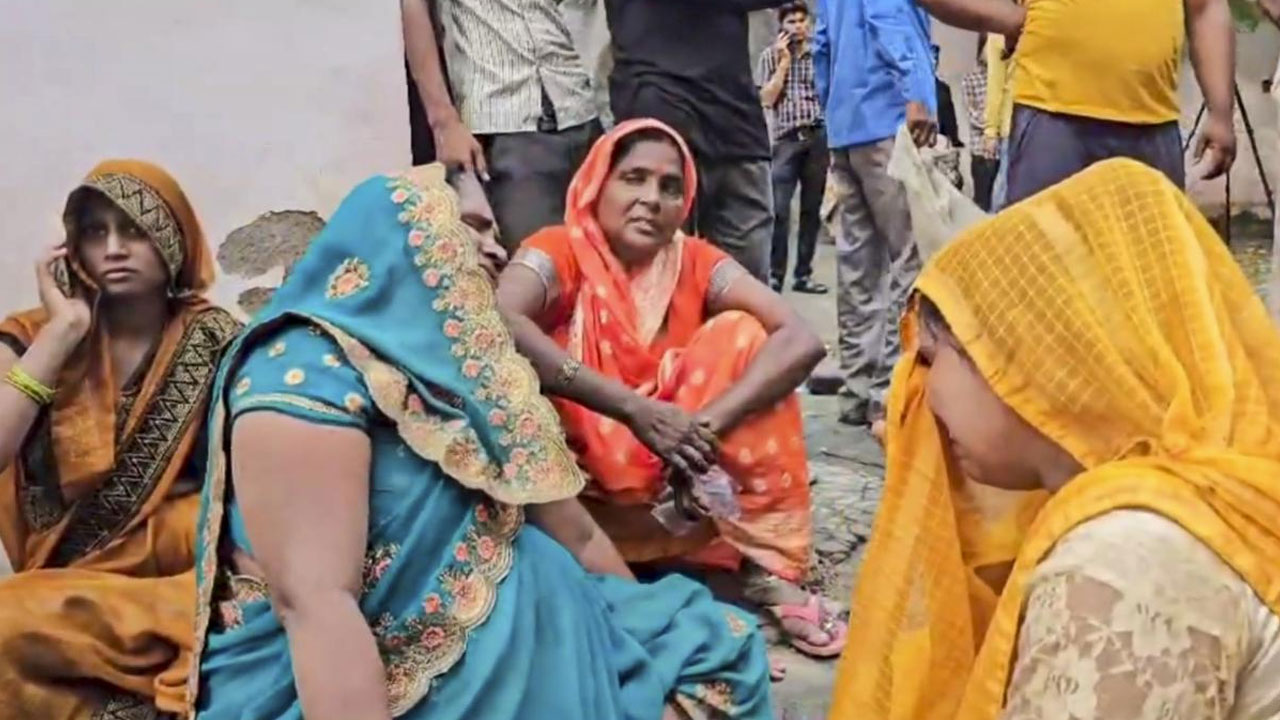President Ram Nath Kovind’s term ends on 24 July. The Election Commission of India has scheduled the election for Kovind’s successor for 18 July 2022. The two main contestants in the poll arena are Draupadi Murmu of the Bharatiya Janata Party (BJP)-led National Democratic Alliance (NDA) and former Union Minister Yashwant Sinha, who is the candidate fielded by the Opposition parties. Shortly after the announcement of Murmu’s candidature, a video showing her sweeping the floor of a Shiva temple in Odisha’s Mayurbhanj went viral on social media. That made it amply clear that while the nomination of Murmu as the ruling coalition’s presidential candidate was aimed at giving a symbolic representation to the Adivasis, it was nevertheless an assertion of the core politics of the Rashtriya Swayamsevak Sangh (RSS) and a reiteration of its project of turning India into a Hindu Rashtra.
It will not be an exaggeration to say that the RSS-BJP will not only exploit the Adivasi identity of Murmu to the hilt but may also use her as a counterweight to the movements of the Adivasis asserting their rights over water, forest, land (jal, jangal, zameen) and other resources. The Adivasis are the only community that is a stumbling block in the way of handing over all these resources to the corporates. Jharkhand, Odisha and Chhattisgarh have been witnessing vigorous movements centred on these issues over the past several decades. At the same time, the Janjati Suraksha Manch, an RSS outfit, has been fanning an agitation demanding delisting of Adivasis (from the Scheduled Tribes) who have converted to Christianity. Against this backdrop, an Adivasi occupying the top Constitutional position would come in handy for the Sangh Parivar.
There is no doubt that Draupadi Murmu comes from an Adivasi community. Presently, the Adivasis are party to an intense debate focused on who is the real owner of the forest resources. The BJP is trying to expand its social base among the Adivasis. At the same time, different Adivasi outfits have been forcefully demanding a separate religion code for the Adivasis in the Census. This demand is perceived as a big threat by Hindu organizations. In Jharkhand, the Adivasis are demanding that a separate code be assigned for the Sarna religion. Similar demands are being made in other states as well. Jharkhand’s former chief minister Shibu Soren and Chief Minister Hemant Soren have openly backed the demand. Over the past couple of years, on several occasions Hemant Soren has vehemently insisted that “Adivasis were never Hindus and will never be”. The BJP is dead opposed to the idea of giving Adivasis an identity separate from the Hindus. The international community is also speaking on this issue. The indigenous inhabitants of many other countries are similarly placed. Most of such countries have accepted similar demands of the indigenous inhabitants. Several international organizations of the indigenous peoples as well as different UN bodies have supported the demand of Indian Adivasis. For these and other reasons, the Hindu organizations need to neutralize this threat. Otherwise, it would be impossible to proclaim India as a Hindu Rashtra – for it would draw severe censure from the global community.
The RSS’s project is multifarious and includes, among other things, handing over jal, jangal, jameen and mineral resources of Adivasi regions to corporate czars; reducing the number of Adivasi voters through delisting; declaring Adivasi areas as General candidates; fielding non-Adivasi upper-castes as candidates from Adivasi areas; assimilating the Adivasis into the Hindu fold; and finally proclaiming India as a Hindu Rashtra. If this Hindutva project is to succeed, Adivasis will have to do their part. Videos like the one showing Murmu sweeping the floor of a Shiva temple can be used for confusing Adivasis.
In a democracy, theoretically, it should hardly matter whether a person occupying a constitutional position is Dalit, Adivasi, OBC, Muslim or Christian. But in India, which is diverse and hegemonic at the same time, the community that the people occupying top positions belong to, does become important. Murmu’s candidate is a key component of a grand strategy – a component without which successful implementation of the strategy would become difficult. The (RSS)-controlled BJP government at the Centre wants to create the impression that it is the greatest benefactor of the deprived, exploited, oppressed and marginalized people of India.

A related issue deserves mention here. On 18 March 2018, President Ram Nath Kovind, along with his wife, visited Odisha’s Jagannath Temple. As he was proceeding towards the sanctum sanctorum, some Pandas, who were against a Dalit entering the temple, tried to stop him and some even pushed his wife around. Taking strong exception to the unsavoury development, the Rashrapati Bhavan wrote a sharply worded letter to Arvind Agarwal, the collector of Puri, on 19 March. Similarly, on 15 May 2018, the president visited the Brahma Temple at Pushkar in Rajasthan. According to media reports, he was not allowed to enter the temple and had to perform puja at the steps leading to the temple. Neither the RSS nor any of its affiliates nor any other Hindu organization protested against these incidents. There is no doubt that President Kovind had to face all this because he is a Dalit. However, the government kept quiet. But for the government’s tacit approval, could anyone have dared to stop the country’s First Citizen anywhere within its boundaries?
That, probably, was the reason why the video of Draupadi sweeping the floor of a temple was made viral the first thing after the announcement of her candidature. The idea was to convey the message that an Adivasi woman steeped in the Hindu religion would be the next President of India.
Christian missionaries began working in India long ago – towards the end of the 18th century and the beginning of the 19th century. Even today, the number of missionaries working in the Adivasi-dominated states like Jharkhand, Chhattisgarh and Odisha is quite small. On the other hand, the Sangh Parivar is in mission mode to curb conversions and turn India into a Hindu Rashtra. It is willing to do all it takes to achieve its objective. Initially, the Sangh Parivar tried to build a network of health and education facilities in parallel with that of the Christian missionaries. However, despite trying hard, institutions launched by the Vanvasi Kalyan Ashram could not come even close to the missionary-run colleges and schools. This was true of the health services launched by the RSS, too. Then issues related to religion, culture, tradition and so on were brought to the fore and using them, attempts were made to promote Hindutva among the Adivasis. According to Professor Badri Narayan, Hindu deities were installed in Adivasi areas to develop a rapport between the Hindus and the Adivasis.
Over the past one decade, violent attacks by Hindu organizations on missionaries and churches in Adivasi areas have grown exponentially. Especially those having links with different Adivasi communities have been targeted. But this will stop becoming even an issue once a Santhal Hindu Adivasi is installed at the Rashtrapati Bhavan. It will be very easy for the RSS to realize its Hindutva dream.
Be that as it may, it is not for the first time that the RSS has adopted such a stratagem. When Atal Bihari Vajpayee was prime minister the BJP had nominated Abdul Kalam as its presidential candidate to prove its secular credentials. President Ram Nath Kovind was also a pawn in the BJP’s game. Installing a Muslim and a Dalit in the Rashtrapati Bhavan paid rich dividends to the party. Now, it is the turn of the Adivasis. And if the Adivasi happens to be a woman, it is the cherry on the cake. The Sangh Parivar is trying to kill dozens of birds with one stone. No one has so far been able to beat the RSS-BJP in the politics of symbolism. The Hindutva brigade will soon start trumpeting that it has accommodated Hindu Adivasis in the power set-up. But the coming generation would do well to remember that Ram Nath Kovind was not allowed to enter a temple and Draupadi Murmu was shown sweeping the floor of a Shiva temple.
(Translation: Amrish Herdenia; copy-editing: Anil)
Forward Press also publishes books on Bahujan issues. Forward Press Books sheds light on the widespread problems as well as the finer aspects of Bahujan (Dalit, OBC, Adivasi, Nomadic, Pasmanda) society, culture, literature and politics. Contact us for a list of FP Books’ titles and to order. Mobile: +917827427311, Email: info@forwardmagazine.in)
The titles from Forward Press Books are also available on Kindle and these e-books cost less than their print versions. Browse and buy:
The Case for Bahujan Literature
Dalit Panthers: An Authoritative History







